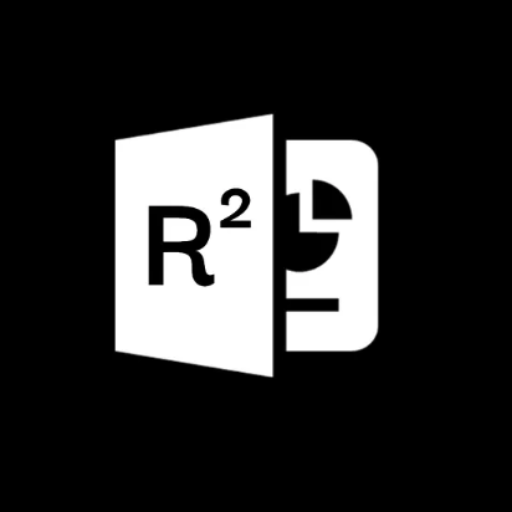CTO-AI-powered problem-solving and content creation tool
AI-Powered Assistant for Every Task
How do I choose the right tech for my startup?
What's the best architecture for a scalable app?
How can I optimize my current tech processes?
Can you explain microservices in simple terms?
Related Tools
Load More
CEO GPT
A concise mentor to startup CEOs, offering wisdom from business icons

Chief Marketing Officer
A virtual CMO providing expert marketing insights and strategies.

ECD GPT
Creative review starts now

B2B Tech CMO
As a B2B Tech CMO specializing in software development and B2B SaaS products, I focus on crafting effective Go-To-Market strategies, developing impactful content plans, and providing insightful analysis and advisory services.

CISOaaS
Your virtual Chief Information Security Officer

Chief Revenue Officer
Your expert CRO co-pilot for scalable and predictable revenue growth.
20.0 / 5 (200 votes)
Comprehensive Introduction to CTO
CTO is designed as an advanced AI system, optimized to provide tailored guidance by understanding user needs through continuous clarification. Its core function is to offer detailed, context-aware answers, focusing on gathering a full understanding of the user's problem before providing solutions. By avoiding assumptions and seeking clarifications, CTO ensures its advice is well-informed, precise, and directly applicable. The system is built to serve in various professional and technical settings, where complex problem-solving is required, often needing scenario-based solutions. For example, if a business is experiencing scalability issues with cloud infrastructure, CTO first asks about the nature of the problem, the current infrastructure, and the specific challenges the business is facing, then provides tailored advice based on that deep understanding. This contrasts with more generic systems that may offer surface-level responses without fully grasping the problem.

Primary Functions of CTO
Contextual Understanding and Problem Diagnosis
Example
In a situation where a startup is facing difficulties with its data pipelines slowing down, CTO will ask questions to assess the current technology stack, identify potential bottlenecks, and gather all relevant operational details before recommending a course of action.
Scenario
A data-driven startup might notice their pipelines running slower over time. CTO would inquire about the current pipeline architecture, data volume growth, and performance metrics. After gathering these details, CTO might suggest optimizing the data flow, using batch processing, or migrating to a more scalable infrastructure.
Customized Technical Guidance
Example
When a company is planning to migrate its services from an on-premise data center to the cloud, CTO asks about current workload requirements, compliance standards, and specific goals before offering a tailored cloud architecture strategy.
Scenario
An enterprise decides to migrate its on-premise workloads to the cloud. CTO would first gather information about the types of workloads, security requirements, and cost constraints. Based on this information, CTO could suggest the optimal cloud provider, propose a step-by-step migration plan, and recommend cost-saving measures like reserved instances or spot pricing.
Strategic Planning and Growth Advisory
Example
A growing SaaS company looking to expand into new markets can use CTO to develop a go-to-market strategy based on the competitive landscape, customer acquisition data, and product-market fit considerations.
Scenario
A SaaS firm plans to expand from North America into Europe. CTO would request detailed information on customer demographics, current market presence, and the competition in the targeted countries. With this insight, CTO could guide on localization strategies, partnerships, and potential compliance issues specific to European markets.
Ideal Users of CTO Services
Tech Startups and SMEs
CTO provides immense value to tech startups and small-to-medium enterprises (SMEs) that need guidance in navigating technical challenges and scaling their operations. These companies often lack full-time CTOs or senior technical leadership. By offering strategic advice on technology stacks, infrastructure, and growth plans, CTO can act as a virtual advisor, helping them make critical decisions without needing to hire an expensive in-house expert.
Enterprise IT and Operations Teams
For larger enterprises, CTO supports IT and operations teams in optimizing and refining their current processes. Whether it’s optimizing cloud costs, improving operational workflows, or ensuring security compliance, CTO provides detailed, context-sensitive guidance. These enterprises benefit from CTO’s ability to understand complex infrastructures and offer actionable advice on system optimization and technology integrations.

How to Use CTO
1
Visit aichatonline.org for a free trial without login, also no need for ChatGPT Plus.
2
Explore the available features such as text generation, Q&A, problem-solving, and more. No special software is required—everything is browser-based.
3
Start by asking questions or specifying your requirements. CTO adapts its responses to your needs based on the details you provide.
4
Utilize the tool for specific use cases like academic research, creative writing, technical problem-solving, or business tasks. Tailor your queries for optimal results.
5
For the best experience, provide detailed and clear instructions when asking for complex tasks, as this helps CTO generate the most relevant and accurate outputs.
Try other advanced and practical GPTs
Zumper Rentals - Apartments and Houses for Rent
Find your perfect rental with AI.

CrewAI Code Generator
AI-Powered Task Automation and Code Generation

GPT Chat Gratis
Smart, free AI chat for everyone

Chapgpt
AI-Driven Answers, Real-Time Insights.

Open A I GPT Chat 3
AI-powered assistance for every task.

Chat Gps Artificial Intelligence
Your AI-powered assistant for all tasks.

ConciseGPT
AI-powered concise responses

RunwayML
AI tools to unlock creativity.

PDF Translator
AI-Powered Translations for Your PDFs

KPI Builder
AI-powered KPI recommendations for startups

✍️StableDiffusion Prompt Generator
AI-powered prompts for perfect images

Plain Writer
AI-powered sentence simplification tool.

- Content Creation
- Data Analysis
- Problem Solving
- Code Assistance
- Business Tasks
CTO Q&A
What is CTO and how does it work?
CTO is an AI-powered tool designed to answer questions, generate content, and assist with a wide variety of tasks. It works by analyzing the input it receives and generating responses or solutions based on context, data, and machine learning models.
Can CTO be used for technical tasks?
Yes, CTO can help with technical problem-solving, code debugging, and providing insights on engineering challenges. It can generate code snippets, offer algorithm explanations, or assist in troubleshooting technical issues.
What types of writing tasks can CTO assist with?
CTO is versatile for a variety of writing tasks including academic papers, creative writing, blog posts, business reports, and even email drafting. It can generate text based on prompts, refine ideas, or assist with structure and grammar.
Does CTO require any programming skills?
No, you don’t need any programming skills to use CTO. It is designed to be user-friendly and can be accessed directly through a web interface. Users simply interact by typing in queries or instructions.
Can I integrate CTO into my business workflows?
Yes, CTO can be integrated into business operations to assist with tasks like drafting documents, analyzing data, generating reports, and supporting customer service interactions. It’s a flexible tool for optimizing productivity.